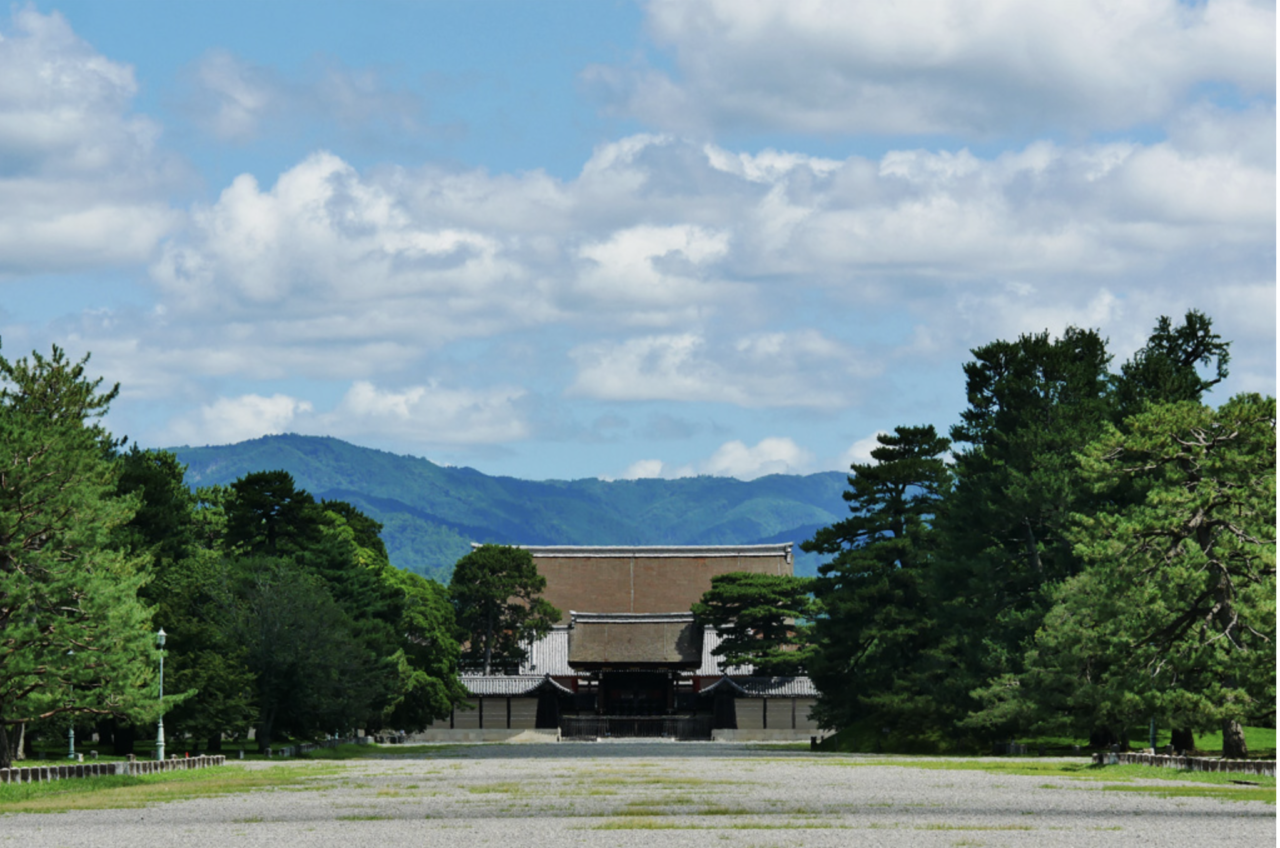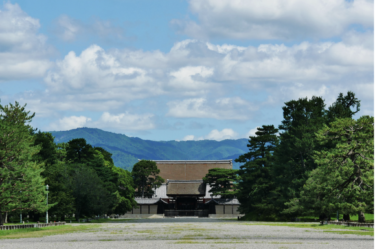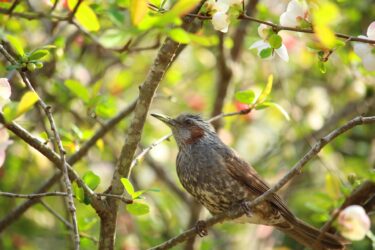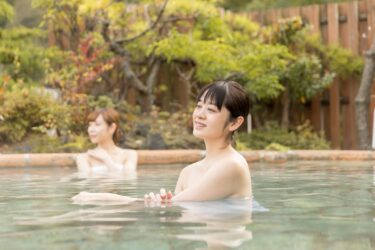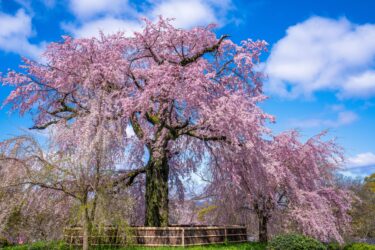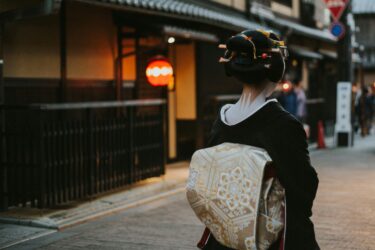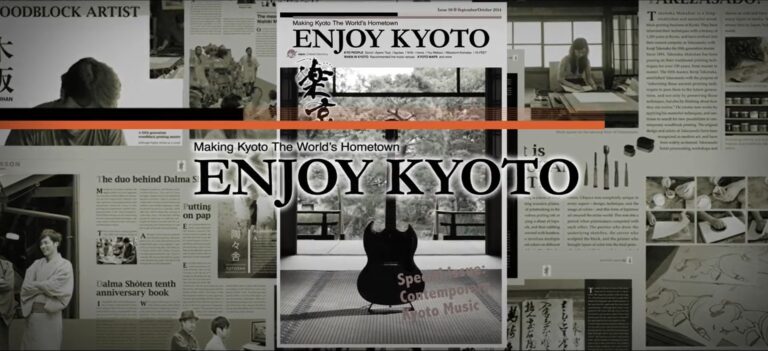The Kyoto Imperial Palace may not be Kyoto’s most popular landmark with tourists, but does rank among the cities’ most historically significant. In fact, the entire city has developed with the Imperial Palace at its center: each of the city’s central districts (nakagyo (“central”), kamigyo, (“above-the-capital”), shimogyo (“below-the-capital”) are named for their locations respective to what was once the home of the Emperor and Japan’s imperial family before the capital moved to Tokyo. Nowadays, the palace is a historical site open to the public, and the surrounding Kyoto Gyoen National Garden and nearby attractions make this area a great palace to spend a half-day or more, whether you’re interested in history, nature, or food. Here’s what you can see and do around the Kyoto Imperial Palace.
Kyoto Imperial Palace: Home to Emperors Past
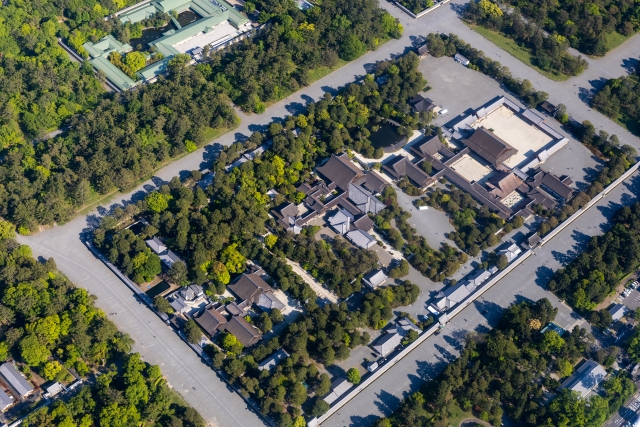
The Kyoto Imperial Palace is one of several buildings—including the Kyoto State Guest House, the Kyoto Sento Imperial Palace (a palace used as a residence by retired emperors), several shrines, and a tea house—contained within a vast, earthen-wall enclosed green space in the middle of the city. From above, the many blocks of tree-covered space look a bit like Central Park does in New York City: a lush green patch in the middle of the city.
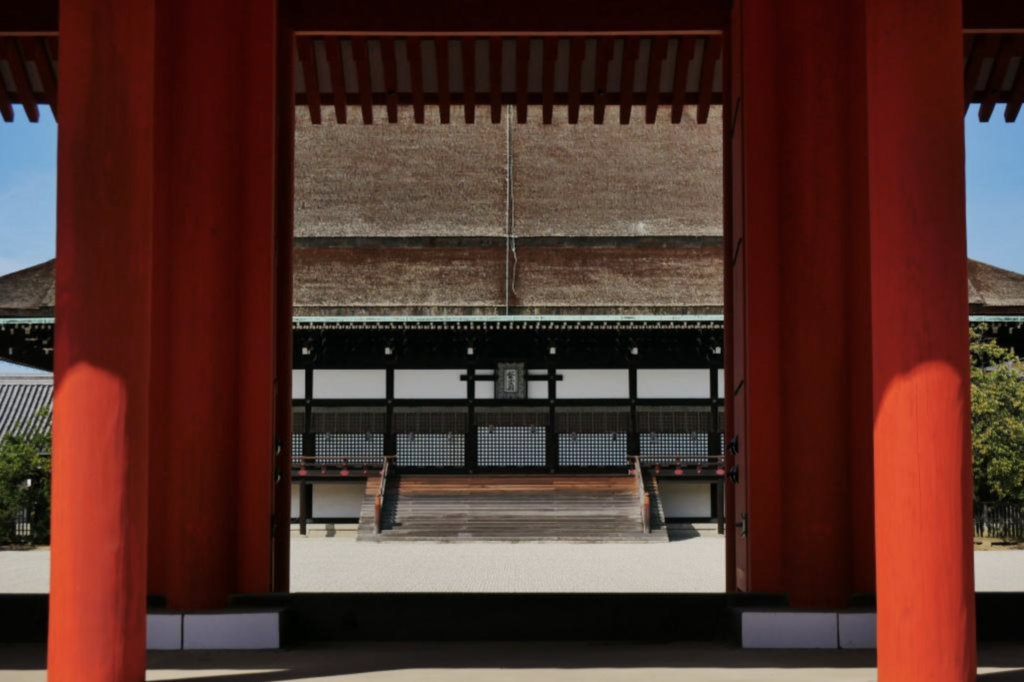
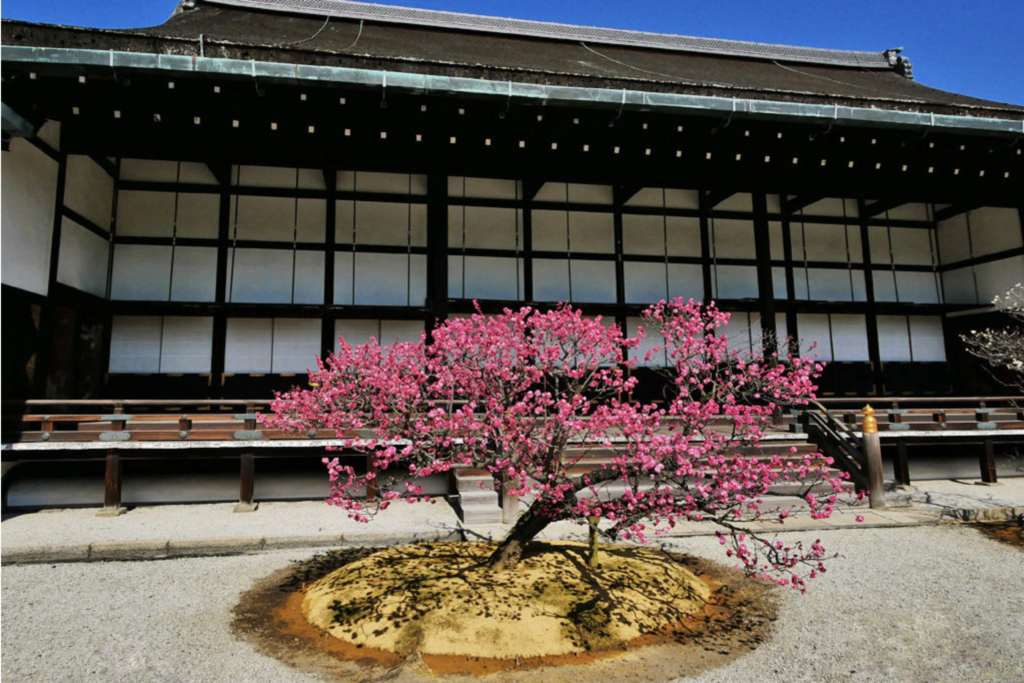
The Kyoto Imperial Palace (Kyoto Gosho) was home to Japan’s emperors for centuries, from 794 until the Meiji Restoration in 1869. While the imperial family no longer lives here, the palace remains an important cultural site, and was host to the enthronement ceremonies of the Taisho (July 30, 1912 – December 25, 1926) and Showa (December 25, 1926 – January 7, 1989) emperors. Today, it is still sometimes used as a venue for the Emperor’s enthronement tea.
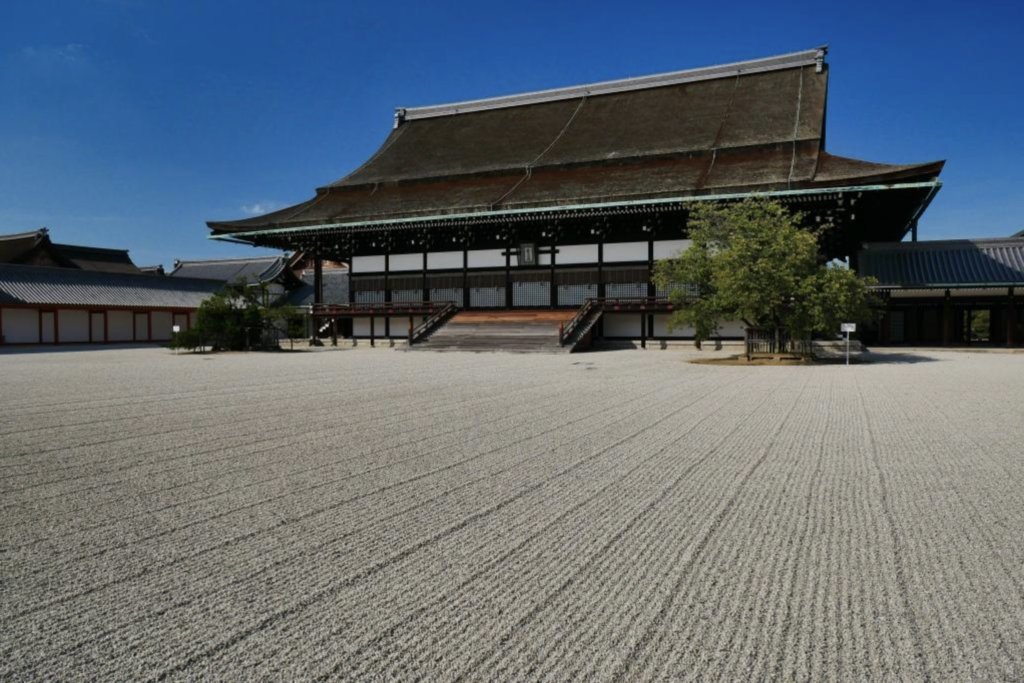
You can enter the palace grounds for free and walk around the exterior of its grand halls, though not inside. The main palace building, which suffered fire damage and has been rebuilt several times, most recently in 1855, is built to emulate the dairi architectural style of the Heian period (794-1185). The traditional wooden structures within the palace grounds feature tatami-matted rooms, and beautifully painted sliding doors are on display in some. Some of the halls, like the Shishinden (Hall for State Ceremonies), were used for important events such as enthronements.
Guided tours in English are available, and they provide useful insights into the palace’s history and architecture. These are held twice a day, and don’t require a reservation, but be sure to check the times, meeting location, and the rare times when the palace is closed to visitors here: Visit the Kyoto Imperial Palace.
Unlike some other historic sites in Japan, the palace and the surrounding grounds have an open layout, so it doesn’t feel overcrowded when you make your visit.
Gonaitei Garden & Oikeniwa Garden
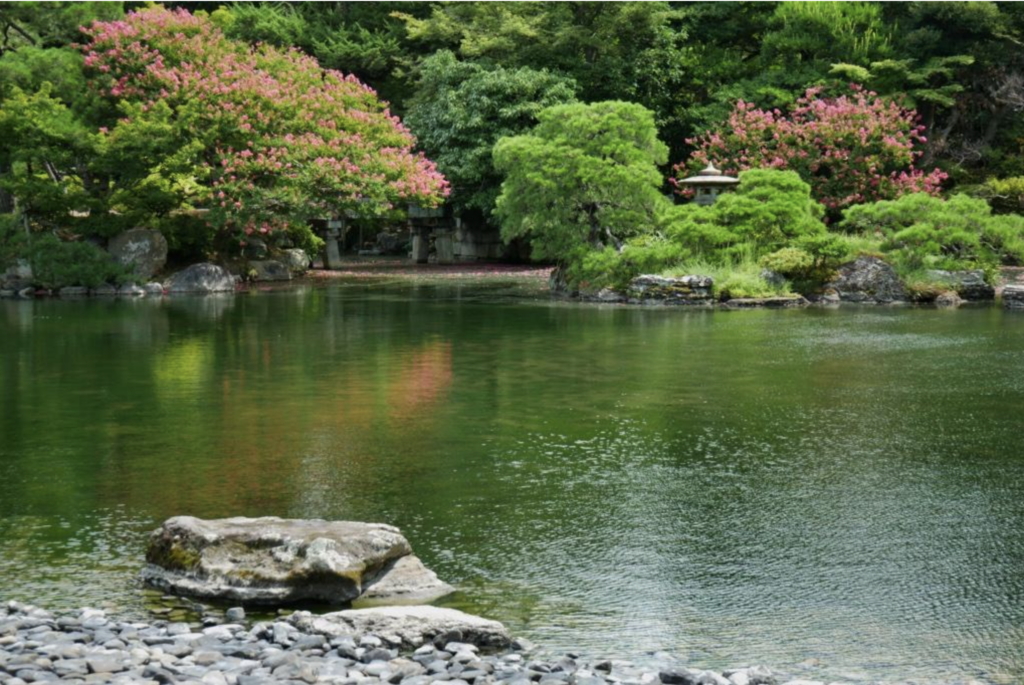
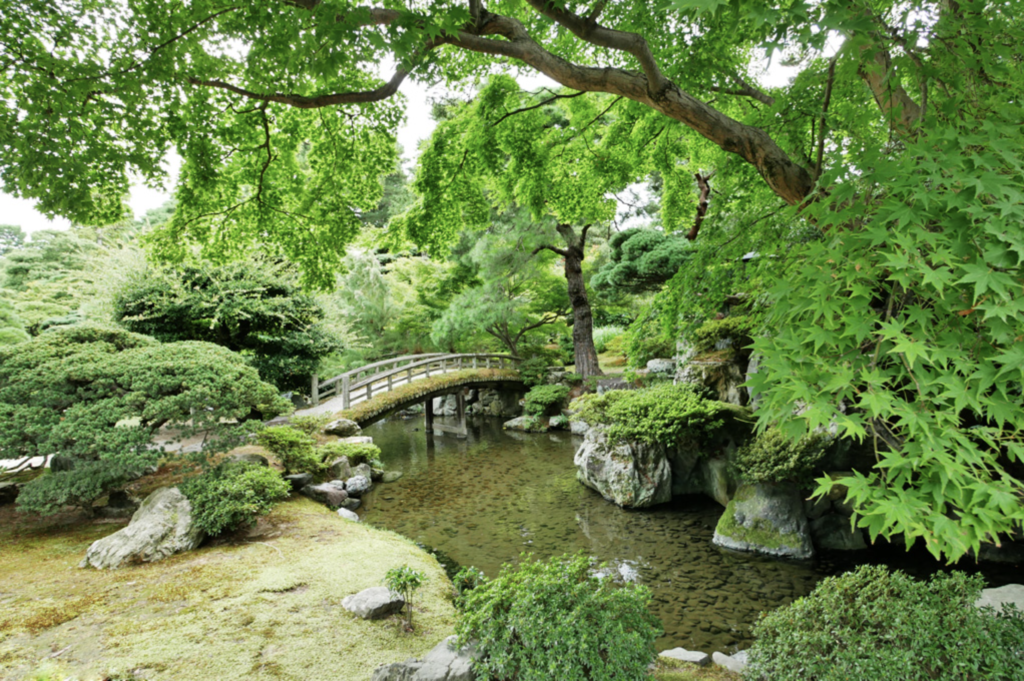
Inside the Kyoto Imperial Palace, you’ll find the Gonaitei and Oikeniwa Gardens, both well-manicured Japanese gardens with water features, arching bridges, and carefully arranged trees and shrubs. The Gonaitei is the Emperor’s private garden, with interesting walkways and smaller-scale natural beauty. The Oikeniwa Garden, on the other hand, is named for the pond that forms its centerpiece, with the trees and plants at its far end creating a scenic backdrop that’s often visited by herons and other birds. These two are particularly tranquil places within the palace grounds, and worth a visit.
Kyoto Gyoen National Garden: A Green Space in the City
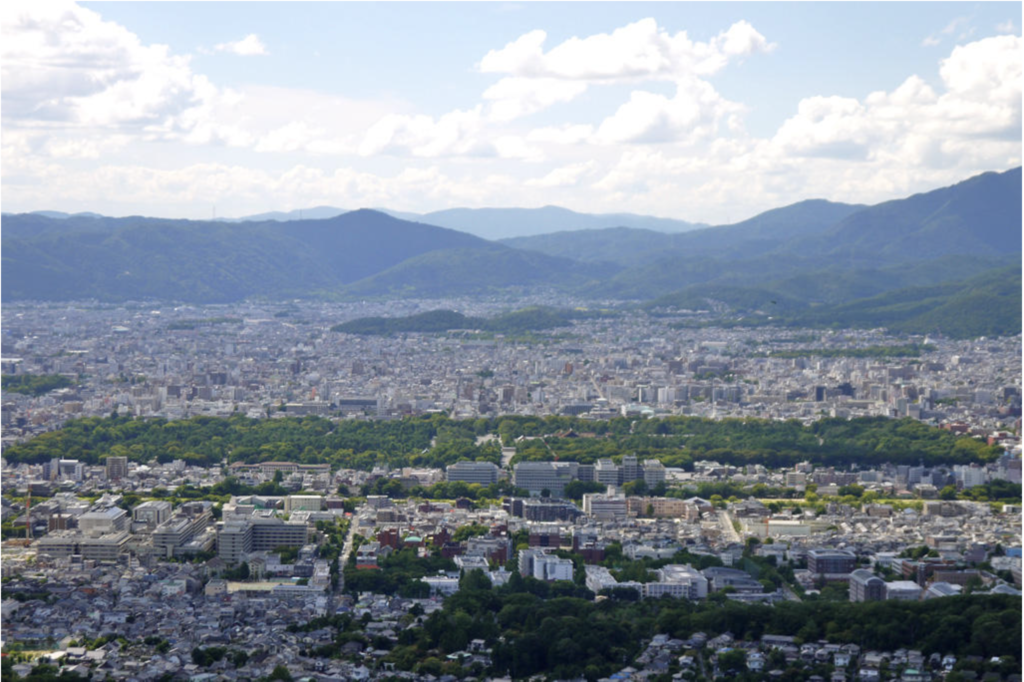
Surrounding the Kyoto Imperial Palace is Kyoto Gyoen National Garden, a vast park that provides a haven from the city’s busier streets. The park features lawns with large trees, crossed by gravel walking paths, so it isn’t a manicured flower garden, but more like a park area. Popular with locals, it’s open year-round and is free to enter.
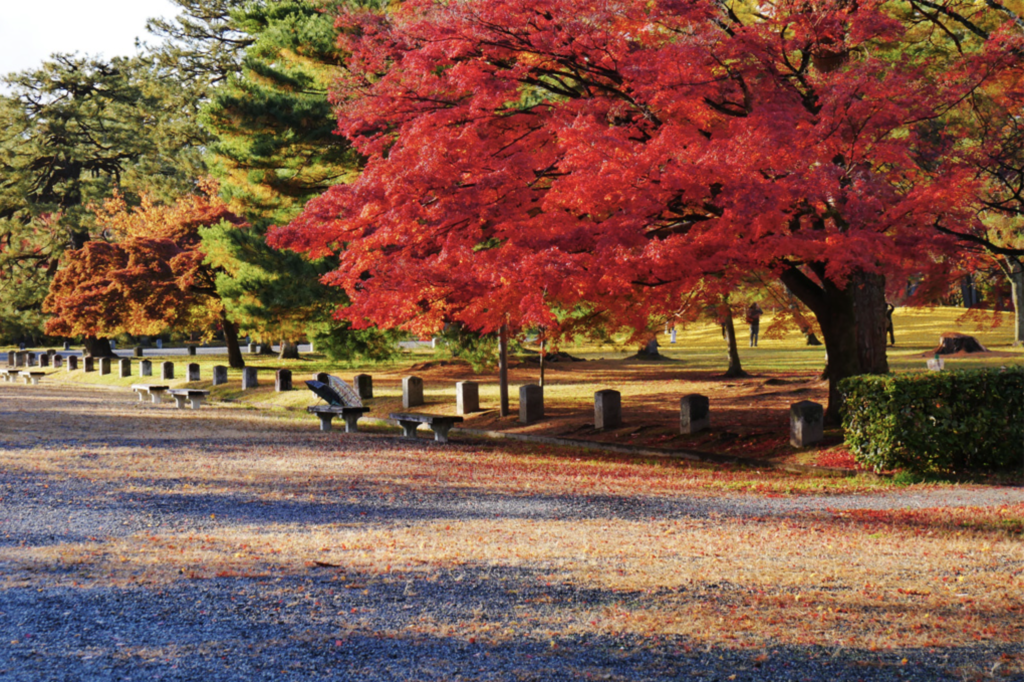
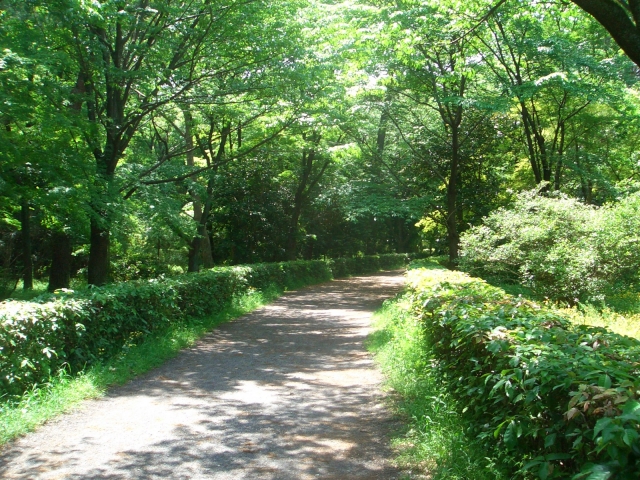
Kyoto Gyoen is especially beautiful in spring when cherry blossoms bloom, and in autumn when the leaves change color.
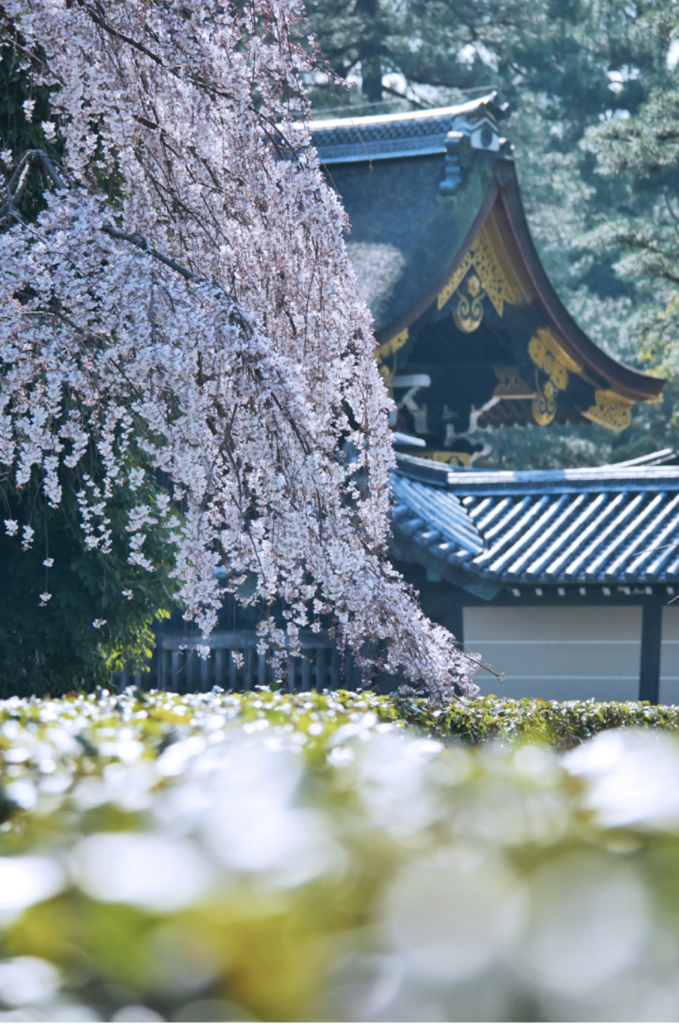
You’ll find wide walking paths, open grassy areas, and benches where you can sit and enjoy the view. If you’re visiting with children, this is a good place for them to run around – just be aware that they aren’t allowed to climb trees within the park. The park also contains several historic buildings, including the remnants of former noble residences, as well as a rest area that serves food.
Kyoto State Guest House: A Look at Modern Japanese Elegance
Also located within the grounds of Kyoto Gyoen National Garden, behind a surrounding wall of its own is the Kyoto State Guest House, which is used to host foreign dignitaries visiting Japan. A newer structure, it blends traditional Japanese architecture with modern elements. The interiors showcase intricate woodwork, embroidery, beautiful garden views, and rooms designed with both Japanese and Western influences. If you’re interested in architecture or want to see a part of Kyoto that’s not on the usual tourist path, this is worth a stop.
You can tour the guest house on your own or on a guided tour, but reservations for tours are recommended. You can see more information about visiting the guest house, including fees and details on the State Guest House app here. You’ll also want to check the opening schedule for dates when English guided tours are offered, and more.
Kyoto State Guest House Website
Planning Your Visit
Getting There
Because the Kyoto Gyoen area is so large, it has multiple access points via gates around the wall, which can be reached by subway or by bus (there are multiple bus stops around the perimeter of the park.
By Subway
Take the Karasuma Line to Marutamachi Station and walk about 5 minutes to the park’s southern entrance, or get off at Imadegawa Station and walk about 3 minutes to the park’s northern entrance.
By Bicycle
If you prefer, you can also make your visit by bike! Bicycles are allowed in Kyoto Gyoen, and there is bicycle parking available near Nakadachiuri Rest House within the park.
Admission
Kyoto Gyoen National Garden is free to enter. The Kyoto Imperial Palace is free to enter, but guided tours require registration. The Kyoto State Guest House requires advance booking for tours.
What Else to Bring
One thing you won’t want to forget is comfortable shoes for walking! The park and palace grounds are large, but the paths in the park ground are paved with gravel, so you’ll want to avoid wearing heels when you visit.
Things to do Nearby: Culture and Food in the Kyoto Imperial Palace Area
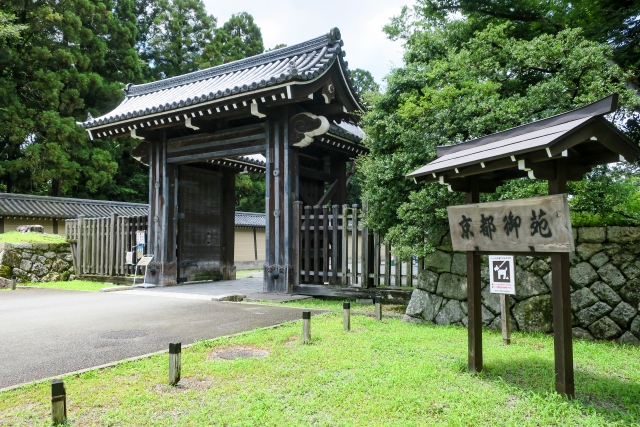
While the Kyoto Imperial Palace and its gardens are the big draw here, the surrounding area has several interesting spots to get a taste of some of Kyoto’s food and culture. The Kyoto Imperial Palace and Gyoen National Garden are located just north of Kyoto’s downtown area, slightly west of the Kamo River, which runs north-south through the city.
General Dining Options
There are four subway stations at the four corners of Kyoto Gyoen, so if you’re looking for a bite to eat, heading for the station area around each is a good idea. You’ll find a number of cafés, restaurants, and chain dining options from Japan and overseas centered around the exits.
Toraya Kyoto Gallery: Traditional Japanese Sweets & A Slice of History
Toraya, located just outside the Kyoto Gyoen’s western wall, is a wagashi (traditional Japanese sweets) maker who once served as purveyor to the imperial court, beginning in the 16th century. The Toraya Gallery displays artwork, including tea ceremony and confectionery-related items that were once owned by Toraya in a beautiful space adjoined to a courtyard garden.
Next to the gallery, at the Toraya café, you can try some of their beautifully made sweets with a cup of matcha. If you’ve never had yokan (a jelly-like sweet made from red bean paste), this is a good place to try it. You can see more about their wagashi sweets here.
See Toraya Kyoto Gallery on Google Maps
Ramen Factory Kyoto: Make Your Own Ramen
For a hands-on food experience, head to Ramen Factory Kyoto, where you can make your own bowl of ramen from scratch. This includes kneading the dough for the noodles, preparing the broth, and assembling the final dish.
It’s a fun activity if you’re traveling with friends or family, and you get to enjoy a fresh bowl of ramen at the end. The staff speak English, so even if you’ve never cooked Japanese food before, they’ll guide you through the process.
See Ramen Factory Kyoto on Google Maps
Nishijin Textile Center: See Kimono Weaving Up Close
If you’re interested in Kyoto’s textile traditions, the Nishijin Textile Center is worth a visit. Located west of the Imperial Palace, this center showcases Kyoto’s famous Nishijin-ori weaving techniques, used to create intricate kimono fabrics. You can watch live weaving demonstrations, try on a kimono, and browse a selection of high-quality textiles. You can learn more about their offerings and events here. If you’re looking to learn about traditional craftsmanship or shop for authentic Kyoto textiles, this is a great place to stop by.

